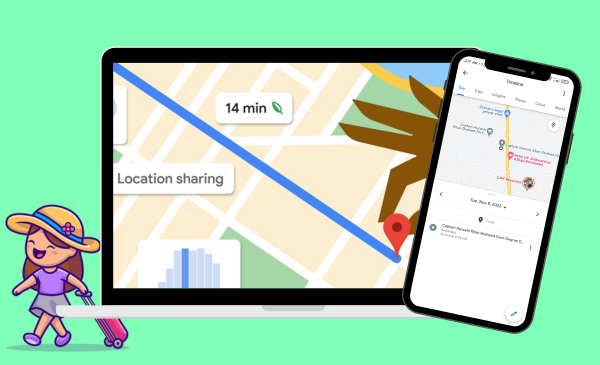In response to growing concerns about privacy and data usage, Google is rolling out significant changes to its Google Maps Timeline feature. This alteration is part of the tech giant’s broader effort to address heightened scrutiny over the collection and utilization of personal information.
Initially disclosed in December of the previous year, these adjustments aim to provide users with more control over their location data while still offering the convenience of personalized mapping services. The update reflects a significant shift in how Google handles user data, marking a move towards greater transparency and user empowerment.
The Google Maps Timeline feature has long served as a digital diary, cataloging users’ travels and visited locations based on their Location History. It has been a handy tool for reminiscing about past journeys and retracing steps taken across various regions. However, with privacy becoming an increasingly prominent issue in the digital sphere, many users have expressed unease about the extent to which their personal data is collected and utilized.
Previously, Timeline data was stored in the cloud, making it accessible from multiple devices but also raising concerns about data security and privacy. With the upcoming changes, users will notice a significant shift in how their location data is managed.
For Australian Google users who keep their Location History enabled – a group likely numbering in the millions due to its default activation – a change is on the horizon. Soon, the Timeline data will be stored locally on their devices instead of in the cloud. This adjustment, according to Google, will grant individuals greater command over their data. Users will retain the capacity to erase data and deactivate the feature as needed.

With the new changes, users still have the option to voluntarily back up their data to the cloud. When backed up, the data will undergo encryption, ensuring that even Google cannot access it. This move towards enhanced security and privacy is part of Google’s commitment to protecting user information.
One of the most significant updates is the new default setting, which will automatically delete location data after three months. This is a notable reduction from the previous option of 18 months. However, users can opt to extend this duration or disable the auto-delete feature altogether, giving them more flexibility in managing their data.
Google will inform individuals when the update is applied to their account. The transition of data to local storage implies that accessing it through the web will no longer be feasible. Unless adjustments are made to user settings, Google will purge any travel history older than the most recent 90 days. This underscores the urgency for users wishing to preserve their older data to review their settings promptly.
To make these adjustments, users should launch Google Maps, click on their profile picture, and select “Your Timeline.” From there, they can choose to retain their data or enable the auto-delete feature. The deadline for making these adjustments is December 1; failing to do so may result in data loss.
In addition to these changes, users will gain the ability to delete activity associated with specific locations. This enhancement allows for more precise control over what data is retained and what is discarded, further addressing privacy concerns.
As part of its ongoing commitment to privacy, Google is also planning to introduce more educational resources within the app. These resources will help users better understand their privacy settings and make informed decisions about their data. Additionally, Google plans to enhance its transparency reports to provide clearer insights into how user data is handled and protected.
Overall, these updates reflect Google’s dedication to adapting to the evolving landscape of digital privacy and data protection. By empowering users with more control and transparency, Google aims to build trust and ensure that its services remain both useful and respectful of user privacy.

Subtly charming pop culture geek. Amateur analyst. Freelance tv buff. Coffee lover
